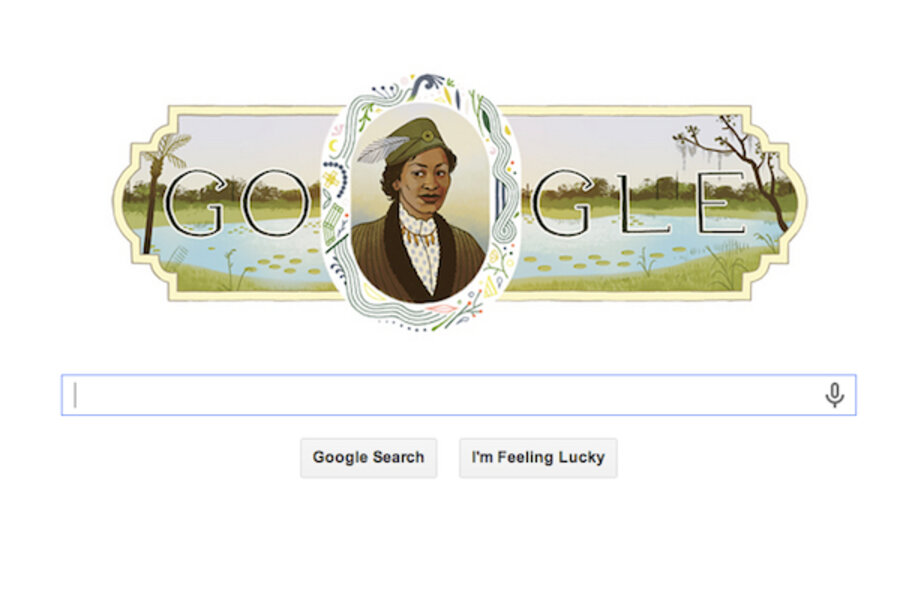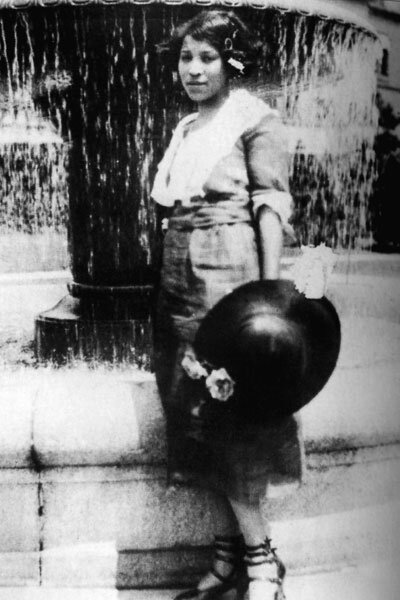How Zora Neale Hurston almost slipped into obscurity
Loading...
Though Zora Neale Hurston has gained considerable Internet notoriety after Google dedicated a Doodle to her Tuesday in honor of her 123rd birthday, she almost didn’t exist as a part of mainstream American literature.
It was an essay by another famed southern author, Alice Walker (who wrote “The Color Purple”), that chronicled searching for Ms. Hurston’s unmarked grave in the small central-Florida town that brought new critical eyes to Hurston’s previously un-lauded work, and made her stories an integral part of the American anthology today.
Though she never gained widespread recognition for her work during her life, it did not stop Hurston from traveling, writing, and chronicling life through Harlem, the South, Haiti, Jamaica, and elsewhere. She first published stories for a literary review at Howard University, in Washington, D.C., where she gained her associates degree, and at various magazines in New York City, where she studied anthropology at Barnard College. She lived in Harlem during the height of the Harlem Renaissance, where she became close with writers and artists such as Wallace Thurman and Langston Hughes with whom she wrote the play "Mule Bone."
During this time, her fellow writers found her passion for folklore, anthropology, and storytelling compelling, as well as entertaining.
“Almost nobody else could stop the average Harlemite on Lenox Avenue and measure his head with a strange-looking, anthropological device and not get bawled out for the attempt, except Zora, who used to stop anyone whose head looked interesting, and measure it,” wrote Mr. Hughes in "The Big Sea."
But it was not met with the same cultural acceptance in the larger world. Many African-American authors of this time felt either ignored or pigeon-holed as a black author by the larger literary community, and Hurston (among many others) had difficulty getting work published. In the late 1950s, she wrote a hand-written letter to Harper’s Brothers, asking them to publish her final work – a story of Herod the Great – an anecdote which Hurston biographer Robert Hemenway says is revealing of “how the bright promise of an earlier interest in black art – the Harlem Renaissance in the 1920s – deteriorated for many of those who had shared its exuberance.”
During this time, Hurston was never able to live off her writing, and took side jobs as a teacher, librarian, maid, and even manicurist to stay afloat.
She retired to a welfare home in a town not far from Eatonville, Fla., the town where she grew up and served as inspiration for her seminal work “Their Eyes Were Watching God”.
When it was originally published in 1937, “Their Eyes Were Watching God” was criticized or overlooked for its use of small town, southern vernacular, (ex: "Dat wuz uh might fine thing fuh you tuh do”), and by African-American authors for playing into the confines of pre-conceived notions about race. Richard Wright – author of "Native Son" – wrote in his review for New Masses, “Her characters eat and laugh and cry and work and kill; they swing like a pendulum eternally in that safe and narrow orbit in which America likes to see the Negro live: between laughter and tears.”
Due to this response, when she died in 1960, many of her works had gone out of print. She was buried in an unmarked grave.
In the meantime, Ms. Walker began reading Hurston’s works. She quickly recognized Hurston’s unusual talent, and set out to find out what had become of the author. Her search culminated in an essay for Ms. magazine titled “Searching for Zora”, which followed Walker’s journey to Eatonville to find Hurston’s grave. There, she met several of the people who inspired Hurston’s characters and got a feel for the upbringing Hurston must have had in an all-black incorporated town in Florida.
After Walker’s essay and advocacy, “Their Eyes Were Watching God” was re-issued and critically re-examined to rave reviews. In the first month of its re-issue, it sold more than 75,000 copies. More recently, it was named one of the top 100 best English language novels by Time Magazine, and Oprah became an advocate for the novel, picking it for her famous book club and producing it as a made-for-TV movie in 2005.
Though her near-obscurity may seem like a disheartening close-call, some argue the opposite. Tom Bissell wrote "Magic Hours," a series of essays on the creative process, and authors who nearly disappeared after their work failed to originally take off. He says this actually speaks to the integrity of the author, and the challenge of the reader.
"I like this idea because it implies that there are many wonderful artists out there, doing their thing, not particularly chasing after fame or renown, and making stuff just for the sheer joy and fulfillment of it," he says in an interview with Harper's Magazine. "Also because it gives average people—you and me, in other words—an enormous amount of responsibility to go looking for stuff on our own, and champion it, and talk about it."
Thanks to Alice Walker and other literature advocates, Hurston is a prime example among posthumous turn-around tales, and finally was given a permanent grave marker by Walker in 1973. It reads:
Zora Neale Hurston
"A Genius of the South"
1901 [sic] -- 1960
Novelist, Folklorist
Anthropologist









